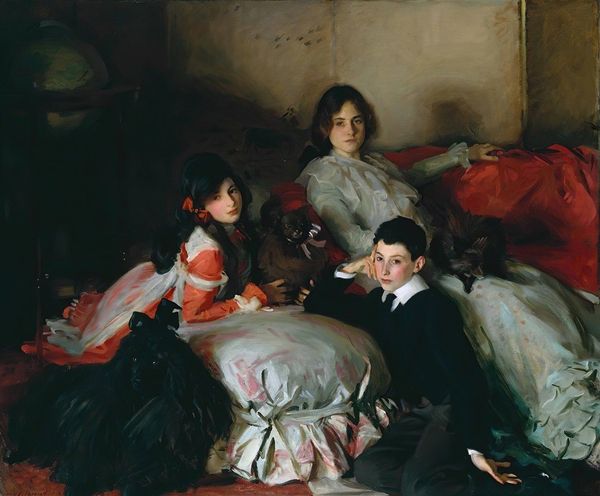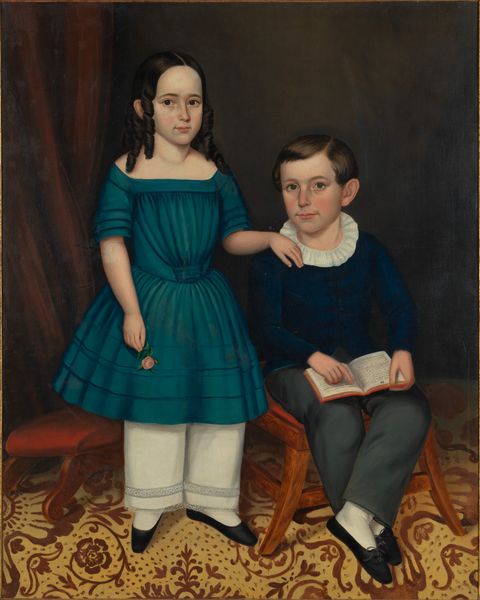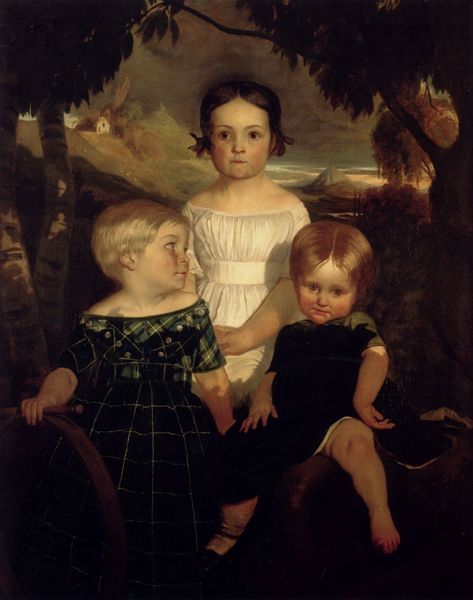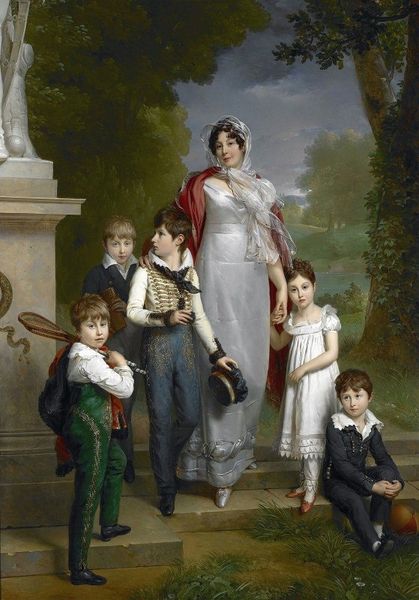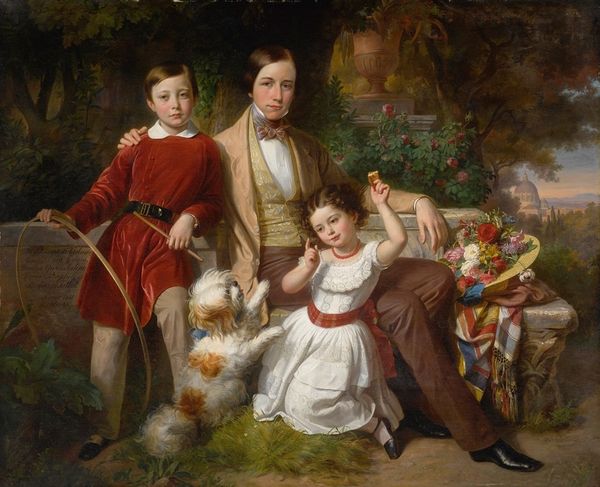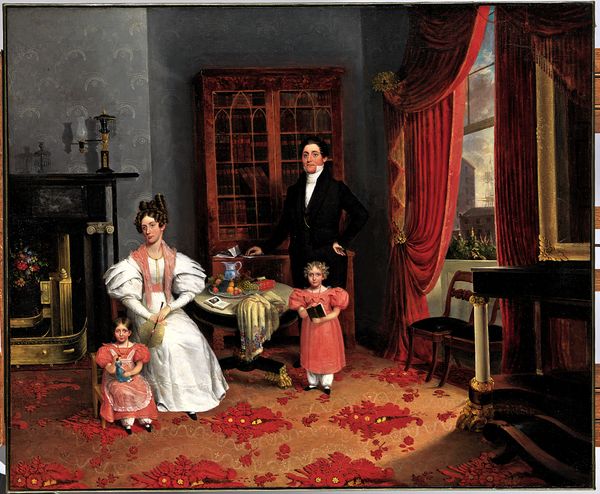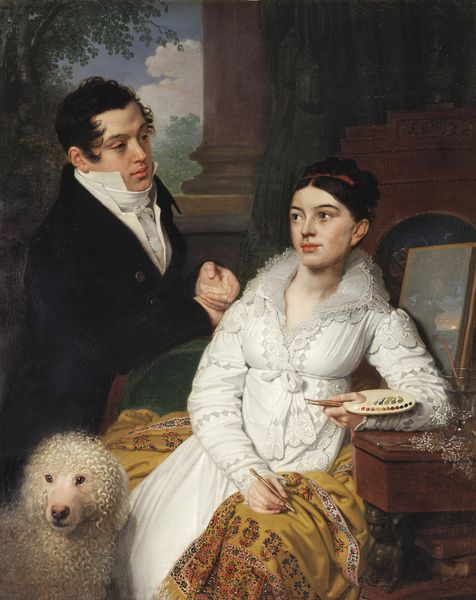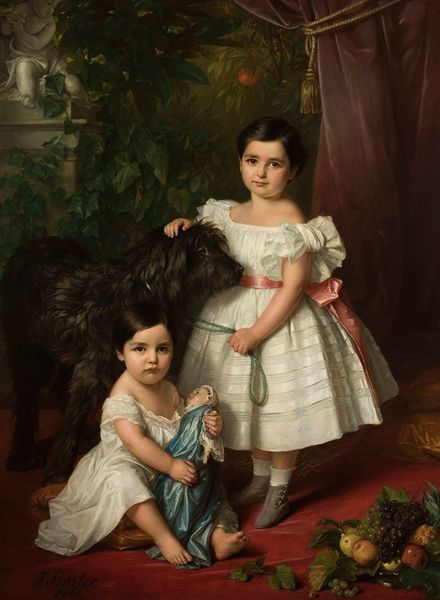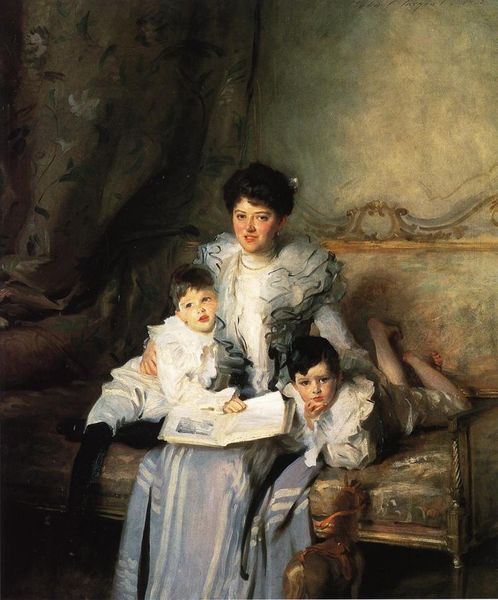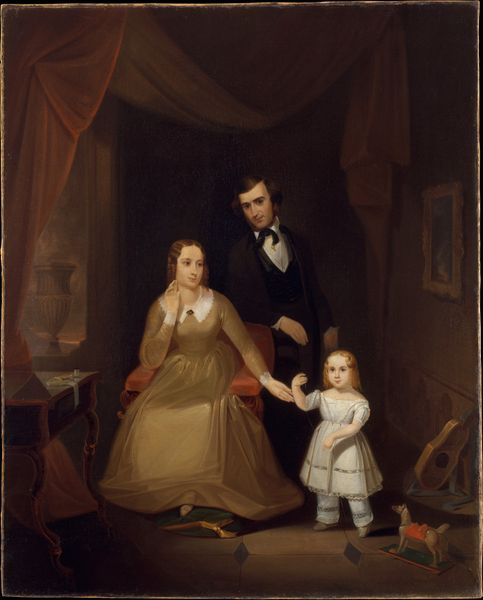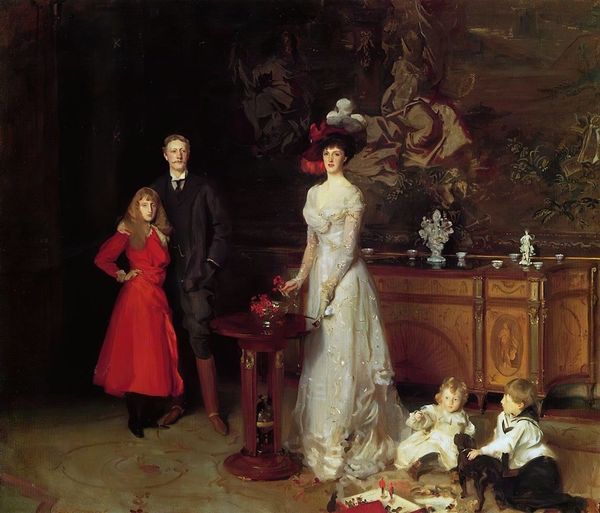
painting, oil-paint
#
portrait
#
painting
#
oil-paint
#
dog
#
group-portraits
#
romanticism
#
genre-painting
#
academic-art
#
realism
Dimensions: 70 x 57 1/2 in. (177.8 x 146.1 cm)
Copyright: Public Domain
Editor: Here we have Samuel Lovett Waldo’s “The Knapp Children,” an oil painting from around 1830 to 1834. It’s quite a formal portrait, with all the children dressed so carefully. I’m curious about that stiffness, and how that conveys something about the family's position in society. What do you see in this piece that stands out? Curator: I think you've pinpointed a crucial element: the deliberate presentation. The stiff poses and elaborate clothing speak volumes about the anxieties and aspirations of the American middle class in the early 19th century. It was a period defined by this ambition in visual culture, which shaped expectations. Editor: Anxieties? In what way? Curator: Think about it: As new wealth emerged, families like the Knapps wanted to solidify their status through visual displays of respectability and gentility. The painting isn't just a likeness; it’s a carefully constructed image intended for public consumption, both for their peers and for posterity. Can you imagine how this portrait might have been displayed, and what purpose it might have served? Editor: I suppose it would hang prominently in their home. It would be used as social currency; showing their affluence. I see what you mean now about that anxiety to maintain appearance. Curator: Exactly. This painting operated within a complex system of social signaling. It's less about capturing a candid moment, and more about asserting a particular social identity through artistic representation. We can think about the museum too and ask, who does such formal artwork include, and exclude, when put on display? Editor: So, it's a glimpse into the socio-political landscape of the time. It really highlights how art is shaped by cultural forces. I had only thought about it in a visual, aesthetic way before. Curator: And hopefully now you can begin to expand and challenge your way of thinking of the art world's complex influence on cultural objects!
Comments
No comments
Be the first to comment and join the conversation on the ultimate creative platform.
